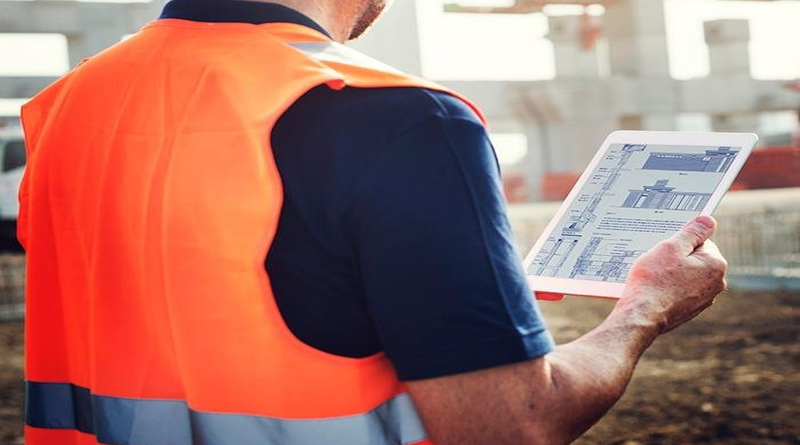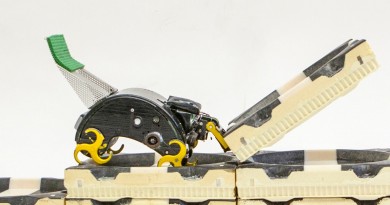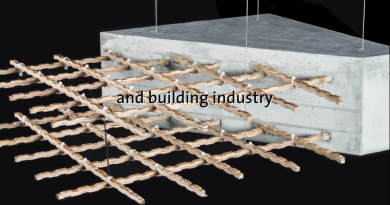These 5 Construction Technologies Are Solving Safety and Productivity Problems
Construction technologies have changed little in the last 100 years, but new tools are driving measurable improvement in safety, productivity, quality and documentation.
1) Wearables
Wearable wristbands, hard hats, belts clips and vests are unlocking the possibility of detecting and eliminating unsafe behaviors before they result in an injury.
“These digital devices collect the data that enable project managers and supervisors to be proactive in correcting unsafe conditions,” Kaplan said. Personal wearables detect movement like falls from height, recording the length and speed of the fall. While this information can be used post-incident in claims adjudication, it can also alert managers to dangerous activity before an injury happens.
“There was a scenario once where a wearable was detecting one worker falling at the same time every day. It turned out he was sliding down a bannister on his way to lunch. Once that behavior was known, it could be stopped, which eliminates some potential for harm,” Kaplan said. “You see the same thing with workers jumping off the back of trucks. It seems innocuous, but it’s an easy way to get hurt.
More advanced personal wearables measure heart rate, body temperature, perspiration and other biometric data that can prove critical in preventing everything from fatigue to heat stroke.
The location-tracking capabilities of personal wearables, along with equipment trackers and BIM technology, can also help contractors improve productivity by better planning work sequences and more efficiently utilize the layout of site to reduce downtime.
“Wearables can tell you how many steps or how long it took a worker to go from point A to point B,” Kaplan said. “That allows project managers to reconfigure things like where materials are laid down, and where the restrooms and break areas are located.”
2) Equipment Tags
Equipment-mounted sensors similarly improve both productivity and safety by allowing for real time tracking of location and utilization. A record of a machine’s idle time versus active time provides contractors two key insights: high idle time indicates the machine could be put to better use elsewhere, while high usage could indicate the equipment may be due for maintenance.
“Proactive machinery maintenance reduces downtime. Sensors let operators know exactly when a key piece of equipment could use a tune-up,” Kaplan said. Tracking the location of equipment means it can be moved into place before a work sequence is scheduled to begin, minimizing delays.
When used in combination with workers’ wearable sensors, equipment sensors also help to keep unqualified employees away from the controls of dangerous machines. If an employee is too close to a piece of equipment for which they do have authorization to operate, the wearable sensor sends an alert to a centralized dashboard, which also maintains a database of all workers’ certifications and clearances.
“The supervisor on site can intervene and make sure the unqualified worker doesn’t take control of that machinery,” Kaplan said.
3) Atmospheric Sensors
Site sensors that detect environmental conditions on the job site have benefits for worker safety and quality assurance.
“If you have high humidity or lots of particulate matter in the air when you are doing work, for example, it could compromise its integrity,” Kaplan said. Sensors can also be placed in between interior and exterior walls to detect moisture that could lead to mold. Failing to catch and remediate the issue early could result in construction defect claims down the road if the mold spreads.
Atmospheric conditions also include things like noise, which could distract workers and prevent them from hearing vital instructions, and wind, which increases the risk of falling equipment. Sensors mounted throughout work zone can emit alarms or send alerts directly to wearables to increase workers’ awareness. They can also be designed to detect smoke and heat to detect fires.
Historical atmospheric data also adds another dimension to project records beyond typical information like schedules and inspection reports.
“If issues arise in the future, environmental data gives stakeholders a better idea of what exactly was going on at the time the work was completed,” Kaplan said.
4) Thermochromic roofs
Whilst not an unknown material for construction, thermochromic tiles and roof panels have been thrust back into the spotlight due to the market demand for eco-buildings. Scientists at the Massachusetts Institute of Technology (MIT) have invented a smart roofing material that takes a new thermal-management approach to eco-design. Their Thermeleon material is a composite of layers that makes it thermochromic, meaning on exposure to heat it changes colour from black to white.
The upshot is that when the sun is shining, a black roof tile covered in the material turns white, reflecting up to 80% of the sunlight and thus keeping the building beneath it cooler. The result? A 20% reduction in cost to keep the interior at a comfortable temperature in the summer, a figure which also comes with an eco-friendly drop in electricity supply demands.
5) Machine learning
The rise of machine learning technology is rapidly redefining the entire concept of how work will be performed in the near future. These technologies are allowing construction companies to operate more safely and efficiently, increase automation and reduce equipment downtime. Construction firms that are looking to streamline and advance their operations are increasingly turning to AI-powered solutions and programmes. For example, machine learning technologies are powering a new generation of programmes that allow companies to continuously monitor their heavy equipment on-site in real time. Should any component malfunction or break down, the system proactively alerts the operator, increasing on-site and worker safety.
Source: riskandinsurance









